What to Do When Partners Have Different Love Languages: A Practical Guide to Bridging the Gap
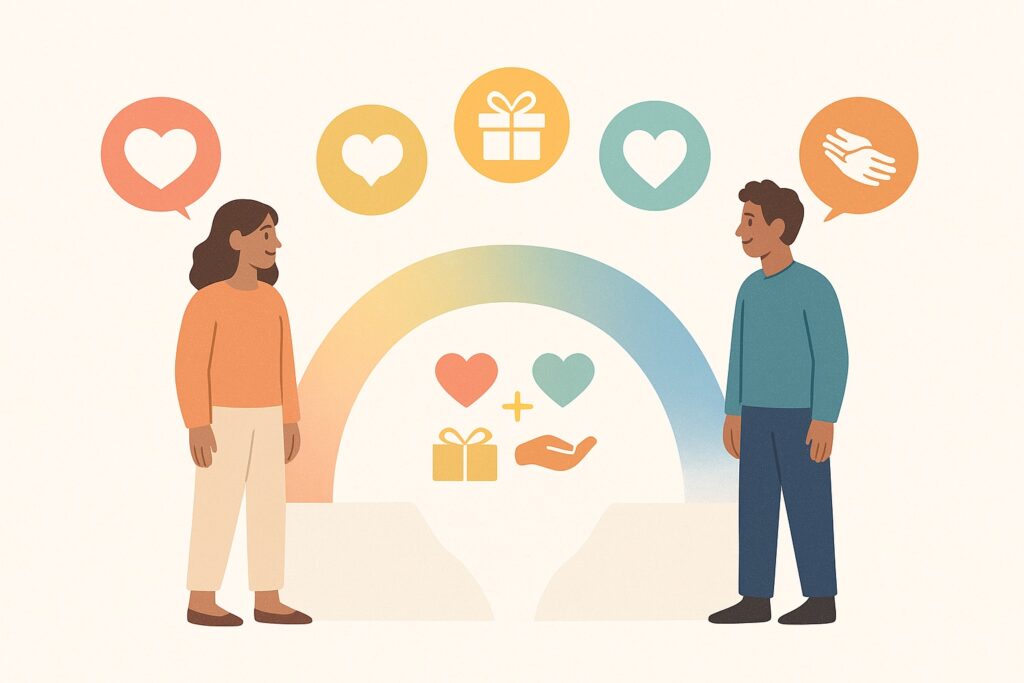
Partners Who Have Different Love Languages… What Do You Do?
“I feel like we’re speaking different languages.”
Maya expresses love through acts of service—she cooks elaborate meals, keeps their home organized, and handles practical details to make life easier. Her partner James craves words of affirmation—he needs to hear “I love you,” receive compliments, and feel verbally appreciated. Maya feels unappreciated because James rarely acknowledges her efforts. James feels unloved because Maya rarely expresses affection verbally.
They love each other deeply, but their love keeps missing the mark.
If this scenario sounds familiar, you’re not alone. Research shows that most couples don’t share the same primary love language, which means the majority of relationships face this exact challenge. The good news? Different love languages aren’t a relationship death sentence—they’re an opportunity to love each other more intentionally and effectively.
Why Love Language Differences Are Actually Common (And Normal)
Before diving into solutions, it’s important to understand that having different love languages is statistically normal. Studies on relationship compatibility suggest that only about 20% of couples naturally share the same primary love language. This means 8 out of 10 couples need to learn to bridge love language differences.
These differences often stem from:
- Different family backgrounds: You learned to express love the way your family did
- Personality variations: Introverts and extroverts may prefer different love languages
- Past relationship experiences: Previous relationships shape what feels meaningful to you
- Cultural influences: Some cultures emphasize certain expressions of love over others
- Individual emotional needs: What you needed most as a child often influences your adult love language
Understanding that love language differences are normal—not a sign of incompatibility—is the first step toward bridging the gap successfully.
The Real Problem: Love Language Misinterpretation
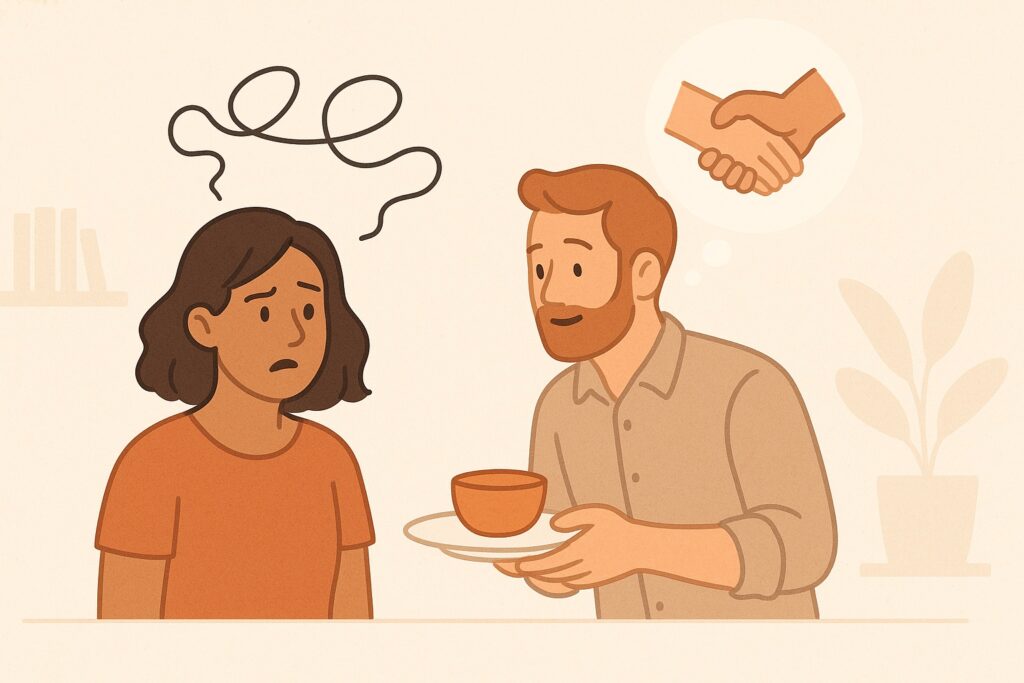
The challenge isn’t that you have different love languages—it’s that you might be misinterpreting each other’s expressions of love. When someone shows love in their language instead of yours, it’s easy to miss the gesture entirely or dismiss it as unimportant.
Common Misinterpretations:
Acts of Service → Words of Affirmation Maya makes James breakfast every morning, but he thinks, “She’s just being efficient” instead of recognizing it as an expression of love.
Words of Affirmation → Physical Touch James tells Maya “You’re amazing” frequently, but she thinks, “Words are easy to say” instead of hearing the genuine appreciation.
Quality Time → Receiving Gifts Sarah plans elaborate date nights for her partner Alex, but Alex thinks, “She just likes going out” instead of recognizing the gift of planned, dedicated time.
Physical Touch → Acts of Service David frequently hugs and holds hands with his partner Lisa, but she thinks, “That’s nice, but it doesn’t help with everything I need to get done.”
Receiving Gifts → Quality Time Lisa brings David small thoughtful presents, but he thinks, “She’s trying to buy my affection” instead of recognizing the thought and care behind each gift.
Strategy 1: Learn to Recognize Love in All Its Forms

The first step in bridging love language differences is training yourself to recognize when your partner is showing love, even if it’s not in your preferred language.
Create a Love Language Recognition Practice:
Daily Love Language Spotting: Each evening, identify one way your partner showed love that day in their primary language. This might feel awkward initially, but it builds appreciation for efforts you previously overlooked.
Example Recognition Statements:
- “I noticed you filled up my car with gas today—that was you showing love through acts of service”
- “When you complimented my presentation, you were speaking words of affirmation to show you care”
- “That hug when I got home was your way of connecting through physical touch”
- “You brought me that book because you know I’d love it—that’s your gift-giving love language”
- “You put your phone away during dinner to give me quality time”
Appreciation Exercise: Once weekly, specifically thank your partner for the way they naturally show love, even if it’s not your primary language. This acknowledgment encourages them to continue expressing love while you’re both learning new languages.
Strategy 2: Become Bilingual in Love Languages

Just as learning a foreign language takes practice, becoming fluent in your partner’s love language requires intentional effort and patience with yourself as you develop new skills.
The LEAP Method for Learning Love Languages:
L – Listen: Pay attention to what your partner requests most often E – Experiment: Try different expressions within their love language
A – Ask: Get specific feedback about what resonates most P – Practice: Make speaking their language a daily habit
Practical Implementation by Love Language:
Learning Words of Affirmation:
- Start with one genuine compliment daily
- Text appreciation for specific actions
- Express gratitude verbally, not just through actions
- Practice saying “I love you” more frequently
- Acknowledge their efforts out loud, even small ones
Learning Acts of Service:
- Ask what tasks would be most helpful
- Anticipate needs instead of waiting to be asked
- Take over something they usually handle when they’re stressed
- Fix or handle something that’s been bothering them
- Do acts of service without expecting recognition
Learning to Give Gifts:
- Pay attention to things they mention wanting
- Give small, thoughtful tokens regularly, not just on special occasions
- Focus on meaning over monetary value
- Remember their preferences and surprise them occasionally
- Create or find gifts that show you understand their interests
Learning Quality Time:
- Put away devices during conversations
- Plan activities you can do together
- Ask about their day and really listen to the answer
- Create regular rituals for connection
- Give them your full attention, not just your physical presence
Learning Physical Touch:
- Start with small gestures like hand-holding
- Offer comfort through appropriate touch during stress
- Initiate casual affection throughout the day
- Respect boundaries while gradually increasing appropriate contact
- Use touch to show support during conversations
Strategy 3: Communicate Your Love Language Needs Clearly
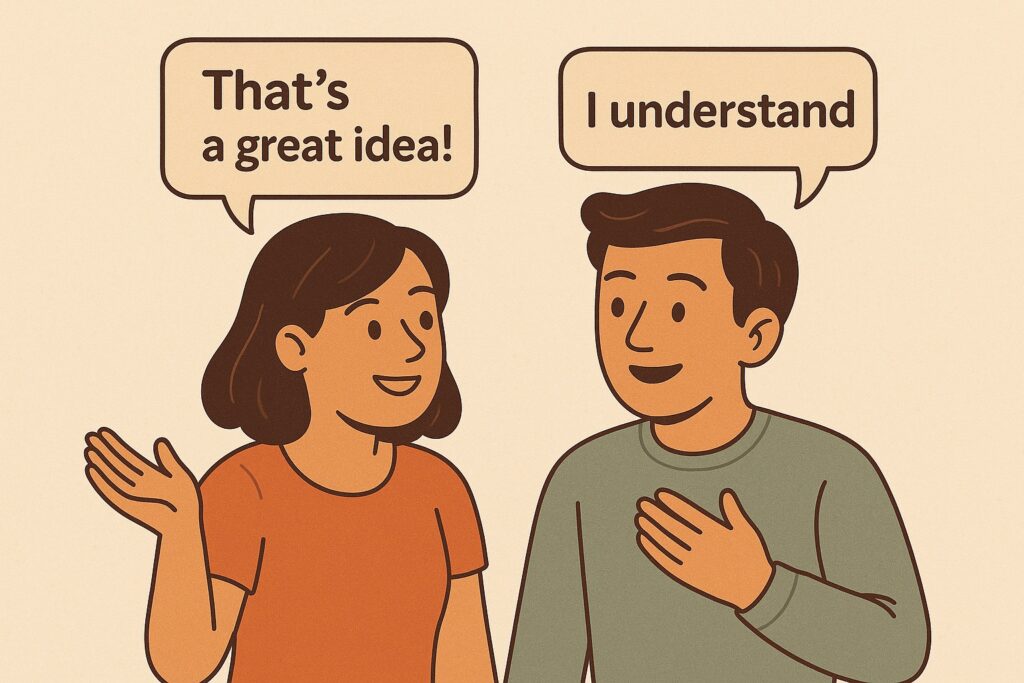
Many people struggle to express their love language needs without sounding demanding or critical. The key is framing your needs as requests that help your partner love you more effectively, not criticisms of their current efforts.
Effective Communication Templates:
Instead of: “You never tell me you love me” Try: “I feel most connected when I hear verbal appreciation. Could you try expressing your feelings in words sometimes?”
Instead of: “You never help me with anything” Try: “I feel most loved when you notice what I need help with and jump in. Acts of service really speak to me.”
Instead of: “You never give me anything meaningful” Try: “I treasure thoughtful gifts because they show me you’re thinking of me. Even small tokens mean a lot.”
Instead of: “We never spend real time together” Try: “I feel closest to you during uninterrupted time together. Could we have phone-free time occasionally?”
Instead of: “You barely touch me anymore” Try: “Physical affection helps me feel connected to you. I’d love more casual touches throughout the day.”
The Love Language Request Formula:
- Acknowledge their current efforts: “I notice how you show love through…”
- Share your need: “I feel most loved when…”
- Make a specific request: “Could you try…”
- Offer reciprocity: “I’d love to get better at speaking your love language too”
Strategy 4: Create Love Language Bridges
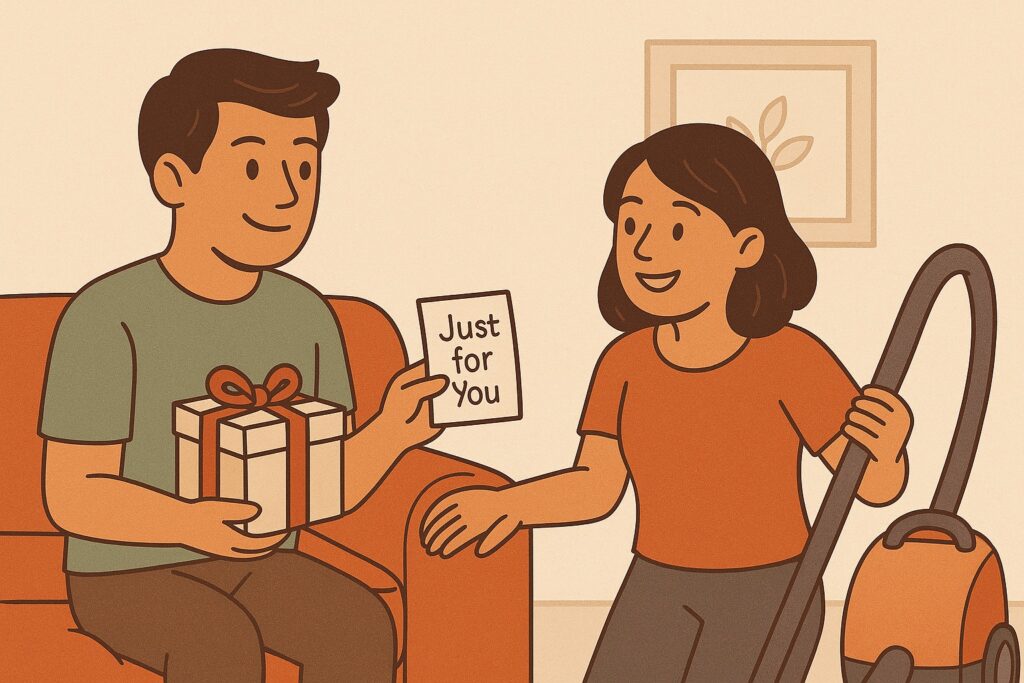
Sometimes the most effective approach is finding ways to combine love languages or express one love language through another.
Love Language Bridging Examples:
Acts of Service + Words of Affirmation: Leave notes explaining why you’re doing helpful tasks: “I’m making your lunch because I want your day to be easier. I love you.”
Quality Time + Physical Touch: Plan activities that naturally include appropriate contact, like dancing, giving massages, or cuddling during movies.
Receiving Gifts + Acts of Service: Give gifts that provide ongoing service, like a meal delivery subscription or hiring cleaning help.
Words of Affirmation + Quality Time: During dedicated time together, focus conversation on appreciation and positive affirmation.
Physical Touch + Receiving Gifts: Give gifts that enhance physical connection, like cozy blankets for cuddling or massage oils.
Strategy 5: Address the Emotional Resistance

Learning to speak a different love language can feel unnatural, forced, or even emotionally difficult. This resistance is normal and can be worked through with patience and understanding.
Common Forms of Resistance:
“It doesn’t feel genuine when I have to think about it” Reality: All learned behaviors feel artificial initially. Genuine care can be expressed through intentional actions.
“If I have to tell them what I need, it doesn’t count” Reality: Clear communication enhances love; it doesn’t diminish it. Your partner wants to love you effectively but may need guidance.
“Their love language feels demanding/superficial/difficult” Reality: Every love language can feel challenging when it’s not your natural expression. Focus on the heart behind the need, not the difficulty of the action.
“I’m already showing love—they should appreciate it” Reality: Both perspectives are valid. You are showing love, and they may need it expressed differently to feel it fully.
Working Through Resistance:
- Acknowledge that learning new ways to express love takes time
- Focus on small, manageable changes rather than complete transformation
- Celebrate progress, not perfection
- Remember that your partner is also learning to speak your language
- Consider couples counseling if resistance creates significant conflict
Strategy 6: Handle Love Language Overwhelm
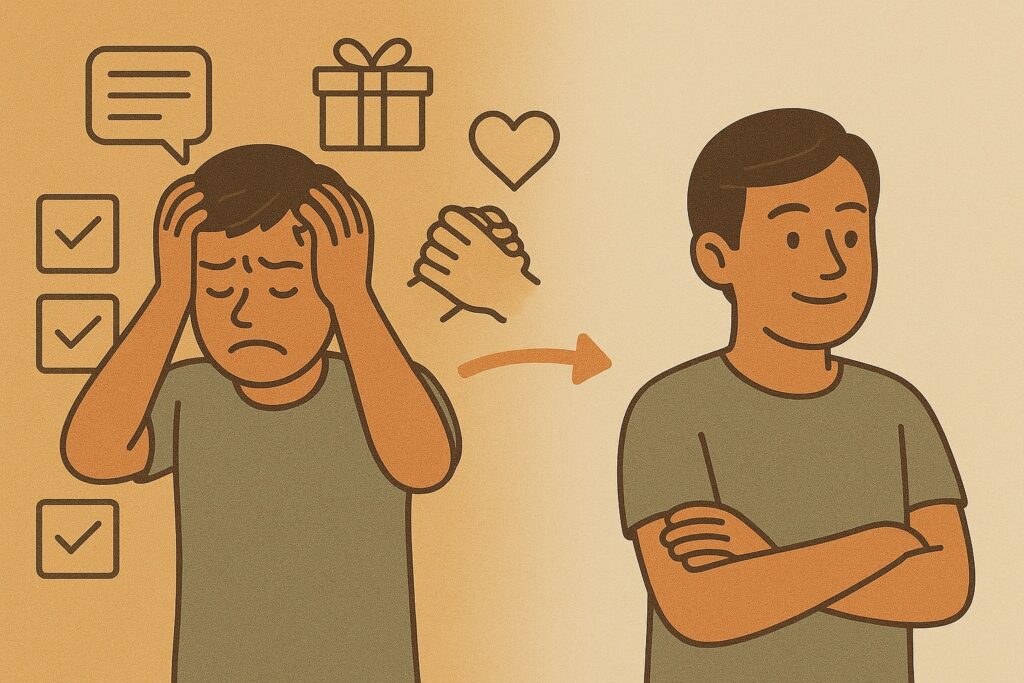
Sometimes couples get so focused on speaking each other’s love languages that it becomes a source of pressure rather than connection.
Signs of Love Language Overwhelm:
- Feeling like you’re “performing” love rather than expressing it naturally
- Keeping score of love language expressions
- Anxiety about whether you’re speaking their language correctly
- Resentment about having to modify your natural expression style
- Over-analyzing every interaction through a love language lens
Solutions for Overwhelm:
- Remember that understanding love languages is a tool for connection, not a rule book
- Continue expressing love in your natural way while adding their preferred expressions
- Focus on consistency over perfection
- Take breaks from actively thinking about love languages
- Return to the heart of the matter: you’re learning better ways to show you care
Creating a Love Language Action Plan

Successfully bridging different love languages requires intentional planning and regular adjustment.
Week 1-2: Assessment and Awareness
- Both partners take a love language assessment or use our discovery guide
- Share results and discuss what each language means to you specifically
- Identify one primary way you’ll work on speaking your partner’s language
- Begin recognizing when your partner expresses love in their natural way
Week 3-4: Initial Implementation
- Practice one expression of your partner’s love language daily
- Ask for feedback: “How did that feel? What would make it even better?”
- Continue acknowledging when they show love in their preferred way
- Be patient with the learning process
Month 2: Refinement and Consistency
- Identify which expressions of their love language work best
- Address any resistance or challenges that have emerged
- Celebrate progress and improvements in connection
- Fine-tune your approach based on what you’ve learned
Month 3 and Beyond: Integration and Growth
- Make speaking each other’s love language a natural part of your relationship
- Regular check-ins about how well you’re both feeling loved
- Adjust approaches as life circumstances change
- Continue growing in understanding of how to love each other effectively
When Professional Help Might Be Needed
While most couples can successfully bridge love language differences on their own, some situations may benefit from professional guidance:
- Deep-seated resistance: If one partner refuses to acknowledge or work with love language differences
- Past trauma: If expressions of certain love languages trigger negative reactions due to past experiences
- Communication breakdown: If discussions about love languages consistently lead to arguments
- Relationship satisfaction doesn’t improve: If understanding love languages doesn’t enhance overall relationship quality after several months of consistent effort
Relationship counselors trained in love languages can provide personalized strategies and help navigate complex dynamics.
Example Scenarios (Case Studies)

Case Study 1: The Service-Giver and the Word-Needer
Marcus (Acts of Service) and Jennifer (Words of Affirmation) struggled for years. Marcus would work overtime to provide for the family and handle household tasks, while Jennifer felt emotionally neglected. The breakthrough came when Marcus started leaving notes explaining his service: “I’m working late tonight to save for our vacation because I want to give you amazing memories.” Jennifer began verbally appreciating his efforts: “Thank you for working so hard for our family—I see everything you do.” Both felt more loved without abandoning their natural styles.
Case Study 2: The Gift-Giver and the Time-Wanter
Sarah loved giving thoughtful presents to David, who craved quality time. Sarah felt hurt when David seemed indifferent to her carefully chosen gifts. David felt neglected despite Sarah’s generous giving. They bridged the gap by combining languages: Sarah began giving “experience gifts” like concert tickets they’d attend together, and David learned to express appreciation for her thoughtfulness while requesting time to enjoy her gifts together.
Case Study 3: The Toucher and the Server
Lisa expressed love through physical affection, while Tom showed love through helpful actions. Lisa felt physically rejected when Tom focused on tasks instead of affection. Tom felt unappreciated when Lisa didn’t acknowledge his efforts to help. They created “service touch”—Lisa would give Tom back rubs while he worked on projects, and Tom would hold hands or offer hugs while explaining what he was doing to help Lisa.
Long-Term Success: Making Different Love Languages a Relationship Strength
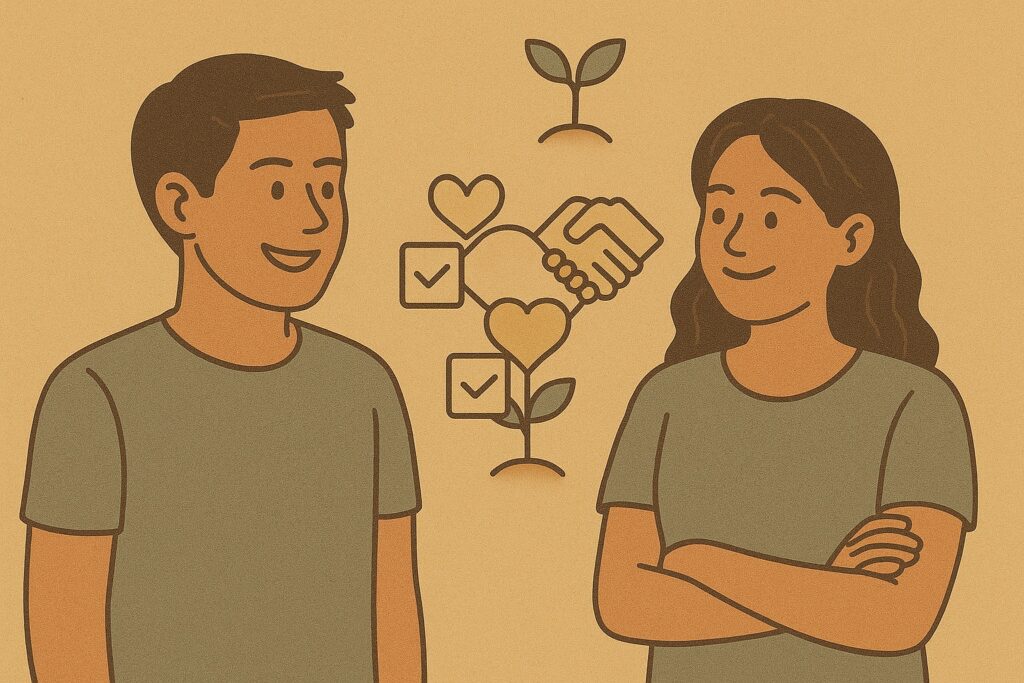
Different love languages becoming a relationship strength through understanding and practice
Couples who successfully navigate different love languages often discover that their differences become a relationship strength rather than a challenge.
How Differences Become Strengths:
- Expanded emotional vocabulary: You learn to express and recognize love in multiple ways
- Deeper empathy: Understanding your partner’s emotional needs increases compassion
- Intentional love: Having to learn your partner’s language makes love more deliberate and meaningful
- Problem-solving skills: Successfully bridging love language differences improves overall relationship communication
- Appreciation for diversity: You learn that different doesn’t mean wrong or less valuable
Maintaining Long-Term Success:
- Regular love language check-ins: Needs can shift with life circumstances
- Continued learning: Keep exploring practical examples of each love language
- Patience with setbacks: Expect occasional misses and approach them as learning opportunities
- Celebration of progress: Acknowledge when you successfully connect through different love languages
- Teaching others: Share your insights with other couples facing similar challenges
Conclusion: Different Love Languages, Deeper Love

Having different love languages doesn’t mean you’re incompatible—it means you have the opportunity to love each other with more intention, creativity, and depth than couples who never have to stretch beyond their comfort zones.
The goal isn’t to abandon your natural way of expressing love but to become bilingual, fluent in both your language and your partner’s. When you can show love in ways that truly resonate with your partner while helping them understand how you best receive love, you create a relationship dynamic that’s both emotionally satisfying and remarkably resilient.
Remember that learning to bridge love language differences is an ongoing process, not a one-time fix. Be patient with yourself and your partner as you both develop fluency in new ways of giving and receiving love. The investment you make in learning each other’s emotional languages will pay dividends in connection, understanding, and relationship satisfaction for years to come.
Ready to Bridge Your Love Language Gap?
Understanding your unique love language combination is the first step toward building bridges that connect you more deeply with your partner. Take our comprehensive love language quiz to identify both your primary and secondary languages, then use the strategies in this guide to create stronger emotional connections.
Discover Your Love Language Profile
Looking for more specific guidance? Explore our detailed examples of how each love language looks in daily life, or learn advanced strategies for navigating complex relationship dynamics when love languages intersect with other challenges.


Leave a Reply